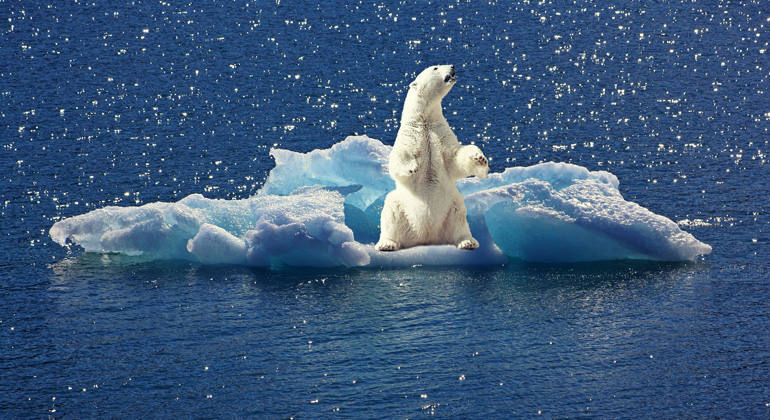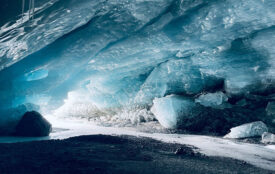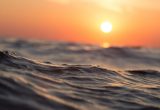The Arctic could become ‘ice-free’ within a decade
The Arctic could see summer days with practically no sea ice as early as the next couple of years, according to a new study out of CU Boulder.
The findings, publishedMarch 5 in the journal Nature Reviews Earth & Environment, suggest that the first ice-free day in the Arctic could occur over 10 years earlier than previous projections, which focused on when the region would be ice-free for a month or more. The trend remains consistent under all future emission scenarios.
By mid-century, the Arctic is likely to see an entire month without floating ice during September, when the region’s sea ice coverage is at its minimum. At the end of the century, the ice-free season could last several months a year, depending on future emissions scenarios. For example, under a high-emissions, or business-as-usual, scenario, the planet’s northernmost region could become consistently ice-free even in some winter months.
For scientists, an ice-free Arctic doesn’t mean there would be zero ice in the water.
Instead, researchers say the Arctic is ice-free when the ocean has less than 1 million square kilometers (386,000 square miles) of ice. The threshold represents less than 20% of what the region’s seasonal minimum ice cover was in the 1980s. In recent years, the Arctic Ocean had around 3.3 million square kilometers of sea ice area at its minimum in September.
Alexandra Jahn, associate professor of atmospheric and oceanic sciences and fellow at CU Boulder’s Institute of Arctic and Alpine Research, set out to analyze existing literature on sea ice projections. She and her collaborators also analyzed sea ice coverage data from computational climate models to assess how the Arctic might change daily in the future.
They found that the first day when sea ice coverage dips below the 1-square-kilometer threshold would occur on average four years earlier than the monthly averages, but could occur up to 18 years earlier.
“When it comes to communicating what scientists expect to happen in the Arctic, it is important to predict when we might observe the first ice-free conditions in the Arctic, which will show up in the daily satellite data,” Jahn said.
The team projected the Arctic Ocean could become ice-free for the first time on a late August or early September day between the 2020s to 2030s under all emissions scenarios.
Jahn said greenhouse gas emissions are the main contributors to sea ice loss. A decrease in snow and ice cover increases the amount of heat from sunlight absorbed by the ocean, exacerbating ice melt and warming in the Arctic.
Sea ice declines have significant impacts on Arctic animals that rely on sea ice for survival, including seals and polar bears. In addition, as the ocean warms up, researchers are concerned that non-native fish could move into the Arctic Ocean. The impact of these invasive species on local ecosystems remains unclear.
Sea ice loss also poses a risk to the communities living near the coastal region. Sea ice plays a significant role in buffering the impacts of ocean waves on the coastal land, Jahn said. As sea ice retreats, ocean waves would get bigger, causing coastal erosion.
While an ice-free Arctic is inevitable, Jahn said future emissions levels will still determine how often the conditions occur. Under an intermediate emissions scenario, a path the current society is on, the Arctic might become ice-free only during late summer and early fall from August to October. But under the highest emissions scenario, the Arctic could be ice-free for up to nine months by late this century.
“This would transform the Arctic into a completely different environment, from a white summer Arctic to a blue Arctic. So even if ice-free conditions are unavoidable, we still need to keep our emissions as low as possible to avoid prolonged ice-free conditions,” Jahn said.
The good news: Arctic sea ice is resilient and can return quickly if the atmosphere cools down.
“Unlike the ice sheet in Greenland that took thousands of years to build, even if we melt all the Arctic sea ice, if we can then figure out how to take CO2 back out of the atmosphere in the future to reverse warming, sea ice will come back within a decade,” Jahn said.
This work was funded by the U.S. National Science Foundation, the Alexander von Humboldt Foundation and NASA.
Source
University of Colorado Boulder | Alexandra Jahn – Nature Reviews Earth & Environment, doi: 10.1038/s43017-023-00515-9








